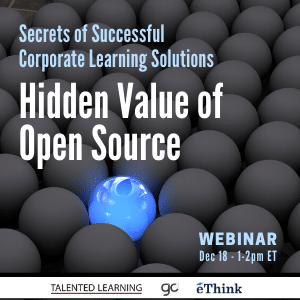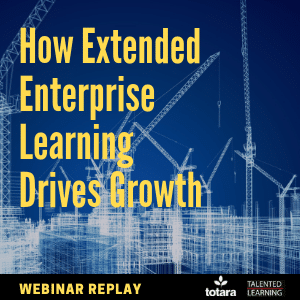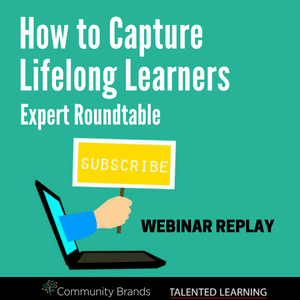It’s hard to believe another year has come and gone, let alone another decade!
I’m not one to dwell on the past. But I do believe the past can inform the future. So before we move on, I invite you to join me in revisiting this year’s most popular topics in extended enterprise learning.
What Topics Were Most Popular in Extended Enterprise Learning?
The world is likely to remember 2019 for dramatic political plot twists, news headlines and cultural trends. But I’m more interested in top takeaways from business-minded learning professionals.
What mattered most to you? We think your content choices are excellent indicators.
If you follow Talented Learning, you know we share information and advice through multiple channels. In addition to publishing weekly blog posts, we also produce monthly webinars and regular podcast interviews with experts from across the extended enterprise learning realm.
Which topics drew the most attention this year? Below, we’ve listed top contenders from each of our three content channels. There’s also a bonus section featuring our all-time most popular posts.
We hope you’ll find this “greatest hits” list useful as you frame next-steps in your organization’s learning strategy.
And as you look for forward-thinking guidance in 2020, stay tuned for more from us in the coming weeks and months!
Top 3 Podcasts of 2019
Two years ago, we launched our podcast series, “The Talented Learning Show“ for convenient access to one-on-one conversations with leading learning technology innovators and practitioners. Of the 15 episodes we produced this year, these three sessions attracted the most listeners:
#3 Interpreting Global eLearning Trends – with Donald H. Taylor
Every year, one of the world’s best-known organizational learning experts, Donald H. Taylor publishes an analysis of his Global L&D Sentiment Survey – a must-read for anyone who cares about the direction of corporate learning technology adoption.
In this interview, Don drills down on highlights from the 2019 results. He also looks at key trends revealed by this research and discusses the implications for learning organizations around the world.
#2 Why Corporations Choose Open Source Learning Systems – with Brian Carlson
Numbers don’t lie. And they’re definitely telling us that open source learning platforms like Moodle and Totara are wildly popular, compared to commercial solutions. But what exactly is driving this success? And why is open source gaining momentum as a foundation for extended enterprise learning?
Listen as Brian Carlson, CEO of eThink Education, explains. Brian is a pioneer in open source learning solutions who has been involved with this movement almost from its inception nearly 20 years ago.
#1 What Makes Microlearning Work – with Karl Kapp
Microlearning is a popular buzzword. But what exactly does it mean? Why is it a valuable methodology? And how can learning professionals develop truly effective microlearning experiences?
Author, professor and perpetual fan favorite, Dr. Karl Kapp, makes it easy to understand in this free-wheeling Q&A session.
Top 3 Webinars of 2019
As soon as we finish our monthly live webinar events, we post the recordings in the Talented Learning Center – a free library of low-hype, high-value, on-demand resources.
All sessions are designed for business-minded training professionals who want to use learning systems more effectively.
To sample our webinars, try three of this year’s most popular sessions:
#3 How to Spark High-Impact Skills Development
In today’s economy, how can organizations attract and retain the best talent? Find out how to build a competitive edge with a culture of continuous learning that lasts. Join skills development experts as they share proven methodologies and discuss real-world successes.
#2 Association Learning Tech Innovation: Reality vs. Hype
Digital breakthroughs like AI, VR and AR are capturing headlines and imaginations everywhere. But what do innovative technologies mean for continuing education providers operating in the real world? Take a closer look from the front lines of the association learning solutions space.
#1 Bridging the Learning Analytics Gap
Educational content providers have long sought better ways to link learning behavior with business performance. But even with today’s most innovative measurement tools, decision-makers struggle to find enough time and expertise to generate useful insights.
How can you bridge this critical gap? Learn how a guided services approach is making a measurable difference.
Top 3 Blog Posts of 2019
Blogging was our first form of outreach – and our commitment to this blog remains stronger than ever. When people like you take time to read and respond to our posts, it helps us better understand how learning technology actually fits into the business world. Interestingly, two of these posts were actually published before 2019. Regardless, here are this year’s most popular topics:
#3 Best Customer Education Blogs – 25 Must-Reads for Learning Professionals
Companies everywhere are striving to gain a competitive edge by improving their customer experience. As a result, interest in customer education is skyrocketing.
But with so many voices in the burgeoning customer learning space, where should you look for credible advice about strategies, technologies and business practices? Check our collection of resources from some of the best minds in the industry!
#2 Customer Training Pricing and Packaging – What’s the Best Strategy?
Customer education is all the rage – and with good reason. But successful programs depend on effective pricing and packaging.
What kind of model works best with your particular product or service? And how much should you charge for optimal results? Read this post to understand and compare popular approaches.
#1 Top Learning Systems Trends 2019 – An Extended Enterprise Market Guide
Hands-down, every year our most popular posts focus on top learning technology trends.
Although we don’t pretend to forecast the future, we do share first-hand observations about factors that are shaping the extended enterprise learning market. And we do it with a fiercely independent perspective.
As you prepare for the year ahead, consider the key trends we outlined early in 2019. How many of these are already influencing the learning experiences you offer? And going forward, what kind of role should they play?
BONUS: Top Blog Posts of All Time
With 6 years of blogging under our belts, which posts have attracted the most attention? These are our readers’ perennial favorites:
#3 Will You Sell More Continuing Education With an LMS?
With today’s red-hot employment market driving demand for reskilling and upskilling, continuing education is on fire. But what kind of systems should continuing education providers choose to support lifelong skills development?
Find out what you should expect in a CEU-focused LMS, and why an employee-oriented learning platform isn’t likely to be your best bet.
#2 Define Your LMS Requirements Like a Pro
The best way to find a learning system that works for your organization is to start with a strong set of requirements. As consultants, we’ve seen far too many situations where buyers neglected this step, with disastrous results.
Requirements definition isn’t complex, but it does take a desire to understand your learning audiences and related use cases. This guide walks you through each phase in the process.
#1 The 3 Licensing Models of an LMS (or Any Enterprise Software)
Interestingly, our most popular post of all time was a smash hit right out of the gate in April of 2014. Since then, it has continued to attract more daily activity than any other post we’ve published.
Why has software licensing intelligence attracted so much attention? Here’s our theory: We were among the first independent sources of information about learning systems pricing issues and trends, and six years later we remain committed to that agenda.
We believe it’s important to educate the market about how to make informed technology choices, and pricing transparency is key to software selection success. Readers seem to agree.
Conclusion
The first 6 years at Talented Learning have coincided with an exciting and eventful phase in the evolution of learning systems. But as 2020 begins, we feel like we’re only getting started!
We hope you’re as eager as we are to explore these popular topics in extended enterprise learning even more deeply in the future. We promise to show up with more boots-on-the-ground blogs, webinars, product reviews, podcasts and reports to help you create business value from extended enterprise learning.
If you want to see us cover additional topics, contact us anytime with suggestions or feedback. We’re always interested in ideas that help us serve you better.
Thanks for reading!
WANT TO LEARN MORE? JOIN THIS ON-DEMAND WEBINAR!
LMS Selection Step-by-Step
With hundreds of learning systems available today, finding the right LMS for your unique extended enterprise needs can be tricky. But with so much at stake for, it’s worth the extra effort.
What exactly should you do to choose the best solution?
Walk step-by-step through a real-world example with John Leh, CEO and Lead Analyst at Talented Learning. You’ll learn:
- How to develop a relevant business case and success metrics
- Methods for researching and defining use cases and requirements
- When to issue an RFP (or not)
- Tips for creating a viable LMS shortlist
- How to make the most of vendor demos and proof-of-concept projects
Need Proven LMS Selection Guidance?
Looking for a learning platform that truly fits your organization’s needs? We’re here to help! Submit the form below to schedule a free preliminary consultation at your convenience.
The post Talented Learning’s Greatest Hits – 2019 Edition appeared first on Talented Learning.
Talented Learning’s Greatest Hits – 2019 Edition original post at Talented Learning



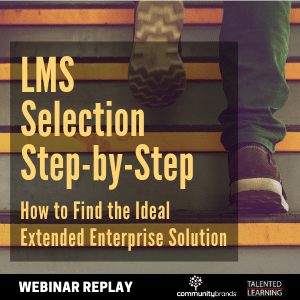
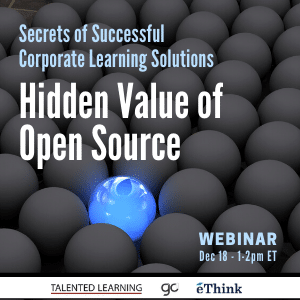




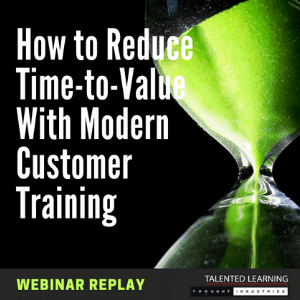


 The learning technology world moves so fast, it can be hard for practitioners to stay ahead of the curve. That’s why I invite innovation leaders to share updates in these 30-minute audio sprints.
The learning technology world moves so fast, it can be hard for practitioners to stay ahead of the curve. That’s why I invite innovation leaders to share updates in these 30-minute audio sprints.